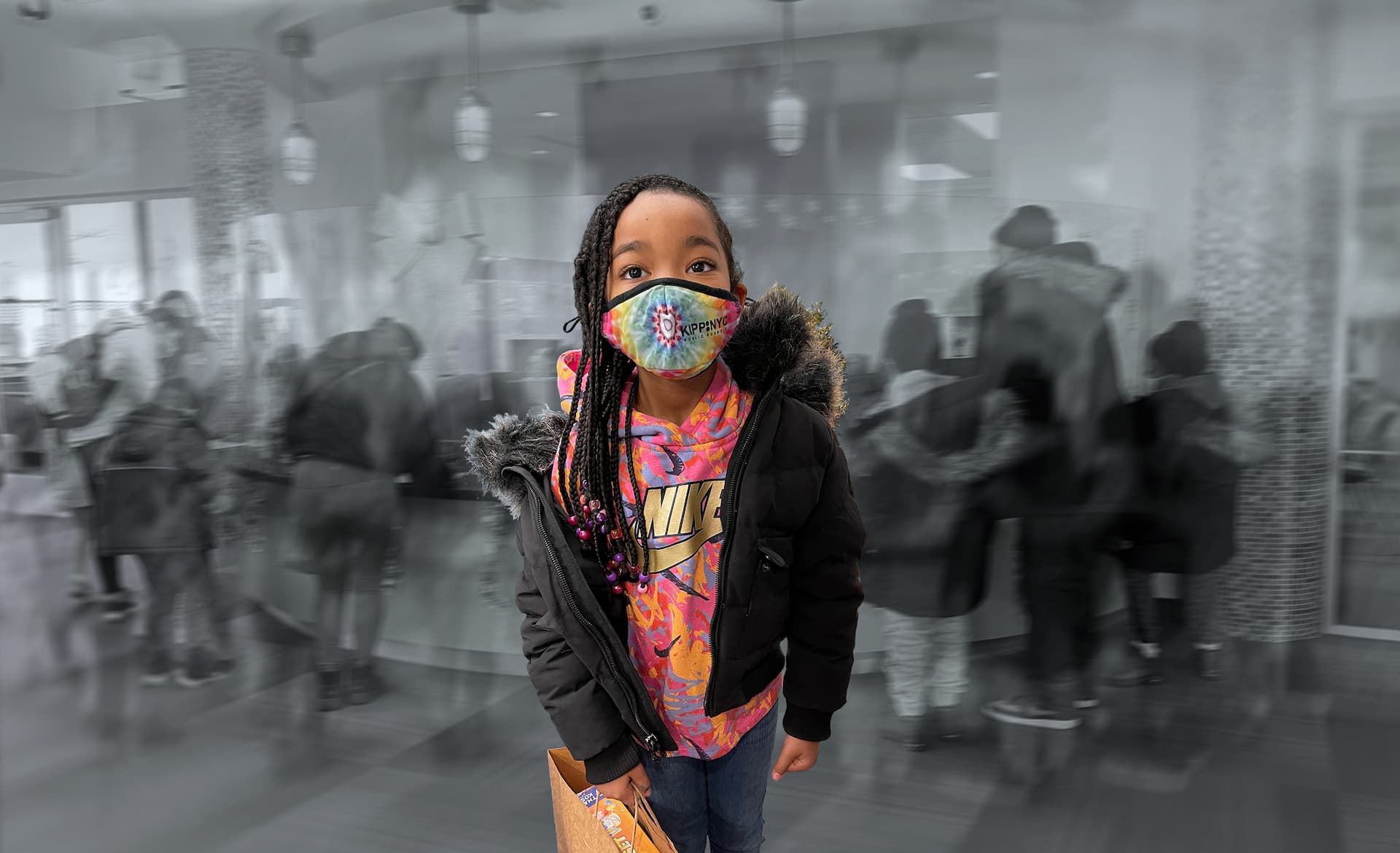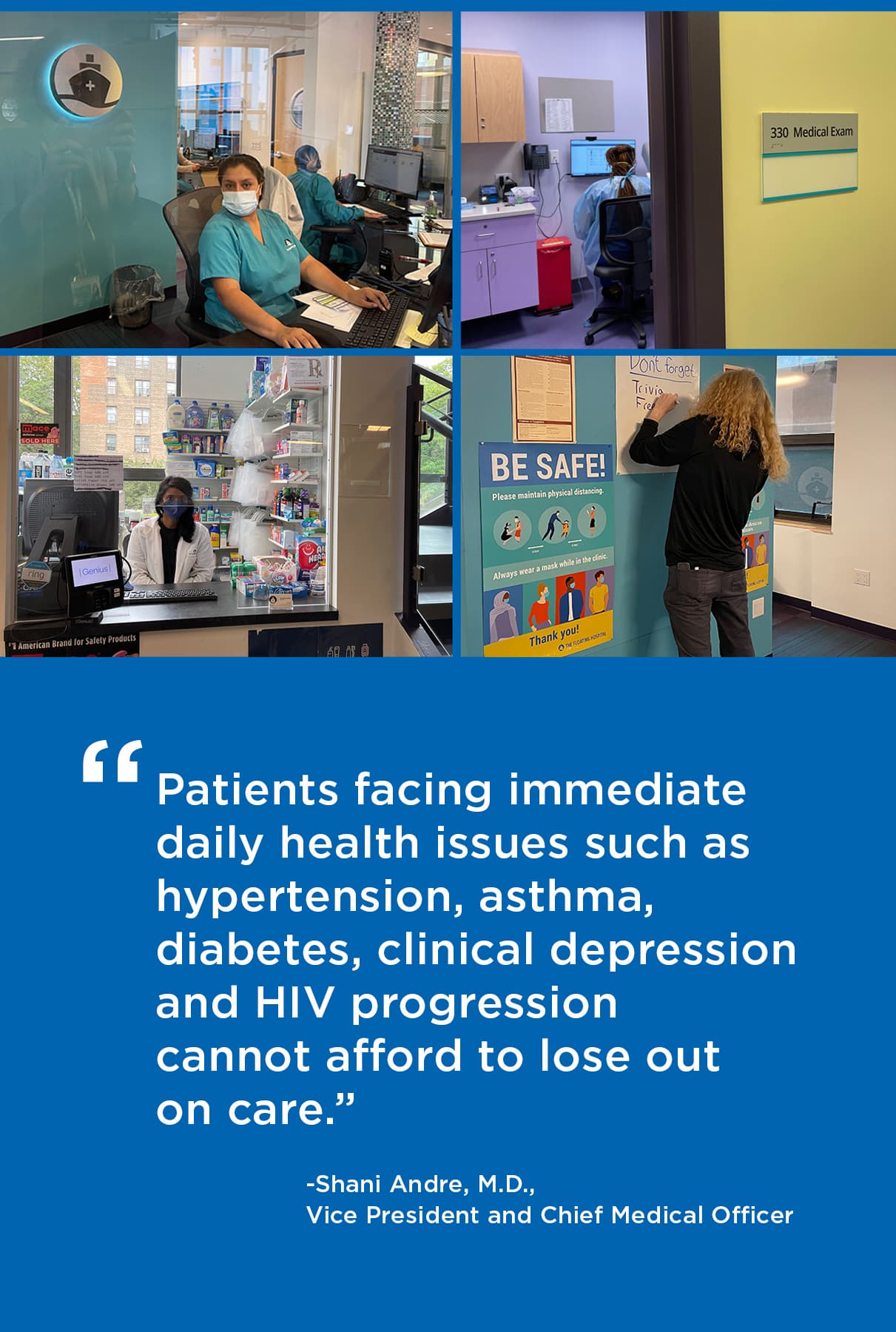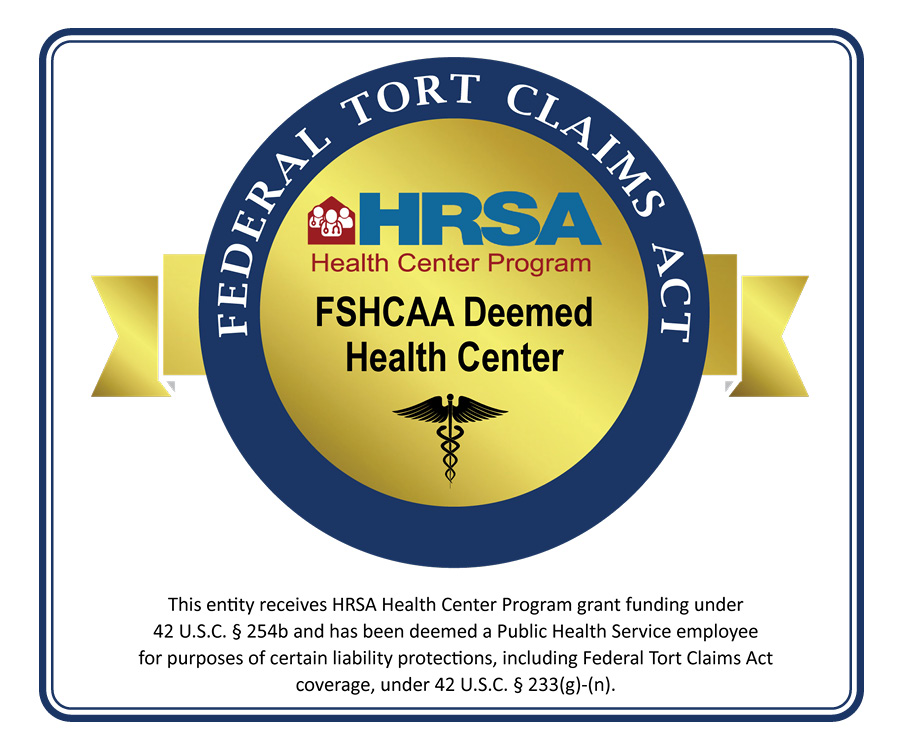
On a race with Omicron
The newest variant is challenging healthcare workers and our safety-net
Like other institutions in the city—and across the country—Omicron is posing yet another stress to the already strained New York City hospital system. Demonstrated to be the most rapidly transmissible variant of the coronavirus, it’s causing spiking numbers of cases, in tandem with an increasing shortage of healthcare staff.
As New Yorkers hunker down, don the KN95 masks, and take extra Omicron-variant precautions, The Floating Hospital struggles to do the same.
“We are experiencing a new wave of Covid exposures, and though at this point in the pandemic, we know the protocols for staying safe, it’s a challenge to stay ahead of the transmission rates and everyone’s fatigue with masking, social distancing and quarantining,” says Chief Medical Officer Shani Andre, M.D. “As the city attempts reopening with varying models of back to work and school, it’s more difficult to control.”
All safety net hospitals are overwhelmed, including essential community clinics such as ours, where nearly half of the clinic staff has tested positive for Covid. Recently, 53 out of 148 clinic employees are out sick, including providers, medical assistants and dedicated Covid testers, and adjacent staff in transportation, scheduling and operations, said Lysandra Cruz-Allen, director of registration services. Though most staff are vaccinated, exposure to numbers of unvaccinated people has left them vulnerable to the virus.
Patient needs increase while the ability to accommodate them lessens
At our flagship clinic in Long Island City, new-patient medical appointments for homeless shelter residents have been reduced or paused, depending on need. New patients from the community at large—the some 26,000 residents of neighborhood low-income public housing complexes—are waiting up to three weeks for initial appointments (usually, they are served within a week). With fewer clinic staff to receive and handle patient flow, patient visits have been greatly reduced, and waiting times for those who do make it to the clinic are doubled.
“Patients facing immediate daily health issues such as Covid-19, hypertension, asthma, diabetes, clinical depression and HIV progression cannot afford to lose out on care,” says Dr. Andre.
Cruz reports providers are struggling to handle up to a 40% increase in patient load, filling in for their absent colleagues to ensure a continuum of care for patients. Service linkages such as transportation and health-education programming—the cornerstone of the clinic’s “more than healthcare” model—have been modified, reduced and, in some cases, paused. Nationwide, such stresses are straining a population of both behavioral-health providers and patients, because of a scarcity of providers and a flood of need.


Upholding our mission through the crisis
The conditions are ripe for a breakdown. Quoted in the New York Times recently, the president of the Greater New York Hospital Association said “It is challenging for the hospitals, but it is particularly stressful for our safety net institutions. A number of them have requested assistance, including staffing assistance from the state. The problem is the cupboard is bare.”
We are among those institutions pressing the state for additional assistance. Because of our charitable status, we rely on a complicated matrix of funding from various sources to keep afloat and serve our community of medically underserved New Yorkers. When any link in that matrix is compromised, so is our ability to serve.
Staff financial analysists report that the clinic’s average daily visits in January 2022 dropped nearly 24% from this time last year, and are down 30 visits a day from December 2021. At that rate, we project 630 lost visits for January 2022. Multiplied by the average reimbursable rate, we anticipate losing nearly $83,000 in patient revenue this month and for the foreseeable future as the third wave of the pandemic continues to exhaust so much of the city’s first responder and essential worker community, including our own.
Evoking The Floating Hospital’s early days as a hospital ship in New York Harbor, Granahan recalls the daily sight of the Statue of Liberty.
“I am reminded of the inscription, ‘Give me your tired, your poor, Your huddled masses yearning to breathe free,’ ” he said, adding, “We can think of no better time to try to honor and uphold her message to all who come through our doors, whether to come to work or come for care,” he said.
For more information on helping us weather the storm, please contact Floating Hospital Executive Director Ellen Barker; ebarker@thefloatinghospital.org.
— Lana Bortolot
Share This Story, Choose Your Platform!
Categories
Tags
The Floating Hospital provides high-quality healthcare to anyone who needs it regardless of race, ethnicity, religion, gender, immigration or insurance status, or the ability to pay. By providing unrestricted medical care in tandem with health education and social support to vulnerable New York City families, The Floating Hospital aims to ensure those most in need have the ability to thrive, not just survive.


